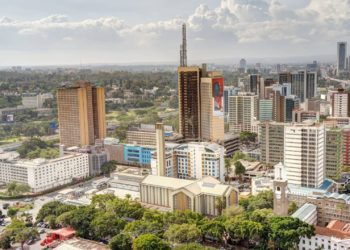Sub-Saharan Africa’s economic recovery in 2024 is under threat as the region grapples with high debt levels, warns a new report by Cytonn Investments. While the World Bank projects moderate growth at 3.4% for the region, more than half of African nations are facing unsustainable debt burdens, with public debt levels expected to remain elevated at 57% of GDP next year, slightly down from 60% in 2023.
The Cytonn Q3 2024 Markets Review paints a stark picture of the challenges facing Sub-Saharan Africa, despite the anticipated economic rebound. Private consumption is expected to drive the modest growth as inflation eases, boosting household purchasing power. However, rising debt servicing costs, continued currency depreciation, and mounting interest rates in developed economies are stifling economic progress across the region.
“Increasing debt servicing costs due to depreciating currencies and higher interest rates in developed countries continue to put significant pressure on African economies,” the report notes.
Sub-Saharan currencies, particularly those of oil-dependent economies, have come under intense pressure in 2024. Many nations are struggling to maintain foreign reserves as high inflation rates, worsened by global monetary policy tightening, have led to capital flight from local markets. “Massive capital outflows, as investors chase higher returns in developed markets, are putting immense strain on African currencies,” the Cytonn report states.
Debt Distress Threatens Growth
According to the report, the risk of debt distress is high across the region, with governments struggling to balance fiscal consolidation with the need for increased spending on infrastructure and social programs. Public debt is expected to remain a key concern throughout 2024, exacerbated by subsidies that governments have introduced to cushion citizens from rising inflationary pressures. These subsidies, however, are likely to worsen public finance and weigh down on debt sustainability in the coming year.
Cytonn highlights that, despite the 0.8 percentage point improvement in growth compared to 2023, the region’s overall debt situation remains precarious. “Debt distress remains a significant risk, with many countries unable to service their obligations without external financial assistance,” the report reads, pointing to the growing reliance on international bailouts and concessional loans.
Kenya, one of Sub-Saharan Africa’s largest economies, is emblematic of the broader challenges facing the region. The report notes that Kenya’s economy grew by 4.6% in Q2 2024, a slowdown from the 5.6% recorded in Q2 2023. The country’s growth prospects have been hampered by elevated fuel prices and political unrest, which have weighed heavily on business confidence and investment.
Global Inflation and Monetary Policy Changes
Globally, inflationary pressures are easing, prompting some central banks, such as the U.S. Federal Reserve and the Bank of England, to begin cutting interest rates. The report notes that “recent developments indicate that some central banks have begun to cut interest rates in response to easing inflation, which could stimulate economic activity going forward.” This trend offers some hope for emerging markets like those in Sub-Saharan Africa, which have been battered by inflationary shocks and aggressive monetary tightening in developed markets.
However, the World Bank’s growth projections for Sub-Saharan Africa, which are pegged at 3.4% in 2024, remain cautious. The report points out that despite the slight improvement in growth from 2023, the overall economic environment remains fragile due to the region’s heavy dependence on external financing and its vulnerability to external shocks, including fluctuating commodity prices and currency depreciation.
Kenyan Shilling and Fixed Income Markets
On the currency front, Kenya’s shilling has been a rare standout, appreciating by 17.7% against the U.S. dollar in 2024. This appreciation has been supported by increased foreign exchange inflows and a successful Eurobond buyback, which reduced debt risk. “The shilling’s strength has been bolstered by improved dollar inflows, including World Bank funding and the government’s Eurobond buyback in February,” the Cytonn report explains. The stronger shilling has provided some relief to importers, although it has not been enough to offset the broader economic slowdown.
Meanwhile, Kenya’s fixed income markets have seen high investor interest, particularly in short-term government securities. Treasury bills were oversubscribed, with an overall subscription rate of 109.4% in Q3 2024, as investors flocked to the safety of short-term bonds to avoid duration risk. Yields on government debt rose significantly, reflecting investor concerns about the government’s rising debt levels and the potential for future defaults.
The report also notes that “the acceptance rate for government securities during the period came in at 88.3%, lower than the 95.5% recorded in Q3 2023,” reflecting growing caution among investors amid Kenya’s increasing fiscal pressures.
Equities and Real Estate Performance
Kenya’s equities market posted mixed results in Q3 2024, with the NSE 20 Index rising by 7.2%, while the broader NASI declined by 2.2%. Gains were driven by large-cap stocks such as Bamburi Cement, KCB Group, and Standard Chartered Bank, which posted significant price increases. However, Safaricom, one of the country’s largest listed companies, saw its stock fall by 13.3%, weighing down overall market performance.
In real estate, the report notes a modest improvement in Kenya’s residential sector, where rental yields increased to 5.4%, compared to 5.3% in Q3 2023. This growth has been supported by higher rental prices and occupancy rates, although the overall market remains subdued.


















